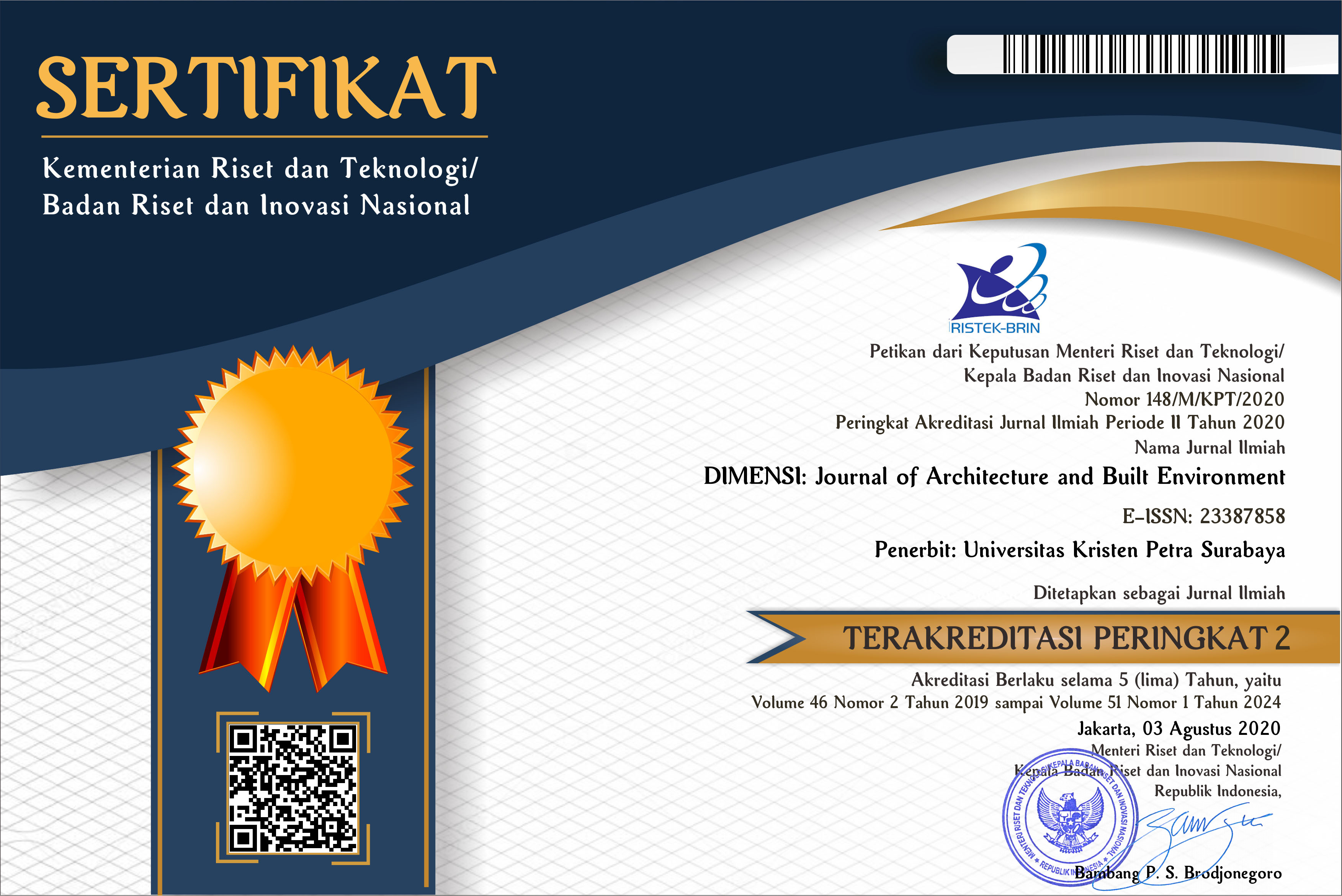CRADLE TO CRADLE IN URBAN PLANNING
 :
:
https://doi.org/10.9744/dimensi.38.1.31-34
Keywords:
Cradle to Cradle, Eco-effective, Urban Planning.Abstract
Cradle to Cradle is a well-known sustainability concept introduced by Braungart and McDonough. It is a concept about how a product can be designed from the outset so that, after their useful lives, they will provide nourishment for something new, thus “waste equals food” (Braungart and McDonough, 2002). This eco-effective principle has been applied widely in products development; however, it is less known in the urban planning discipline where sustainable development is the main ‘key word’ in transforming the urban area. The question that this paper expands on is whether it is possible to apply the Cradle to Cradle concept into urban planning practice. This article explains the difference between the eco-efficient concept and the eco-effective concept and elaborate from there on a possibility to apply the Cradle to Cradle principle to urban planning practice. It is shown that the Cradle to Cradle principle offers an instrument for bringing complex sustainable concepts within reach of planning thinking and discussion, and for generating alternatives which may not otherwise be given serious consideration.Downloads
Download data is not yet available.
Downloads
Published
2012-01-24
How to Cite
Kusumo, C. (2012). CRADLE TO CRADLE IN URBAN PLANNING. DIMENSI (Journal of Architecture and Built Environment), 38(1), 31-34. https://doi.org/10.9744/dimensi.38.1.31-34
Issue
Section
Articles
License
Authors who publish with this journal agree to the following terms:
- Authors retain copyright and grant the journal right of first publication with the work simultaneously licensed under a Creative Commons Attribution License that allows others to share the work with an acknowledgement of the work's authorship and initial publication in this journal.
- Authors are able to enter into separate, additional contractual arrangements for the non-exclusive distribution of the journal's published version of the work (e.g., post it to an institutional repository or publish it in a book), with an acknowledgement of its initial publication in this journal.
- Authors are permitted and encouraged to post their work online (e.g., in institutional repositories or on their website) prior to and during the submission process, as it can lead to productive exchanges, as well as earlier and greater citation of published work (See The Effect of Open Access).

















